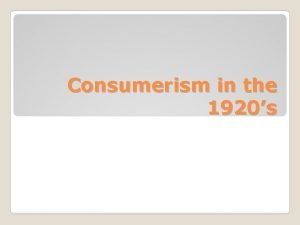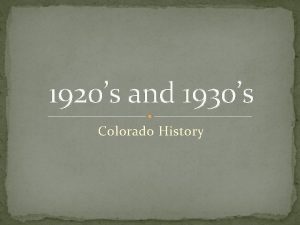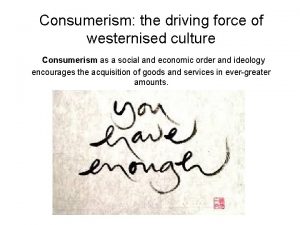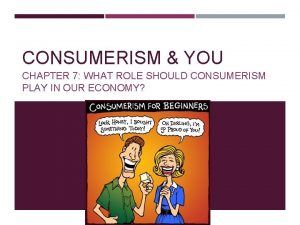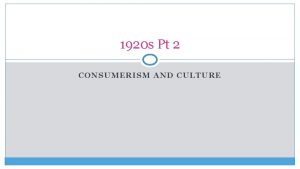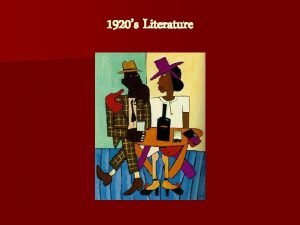Consumerism in the 1920s Consumerism theory that an








- Slides: 8

Consumerism in the 1920’s

�Consumerism- theory that an increasing consumption of goods is economically desirable, or the actions of buying by the public �American’s were very confident about the economy in the 1920’s. � 3 main factors contributed to consumerism ◦ Mass Production of Goods ◦ Advertising ◦ Creation of Credit and installment buying Consumerism

� Mass production made technology affordable to the middle class in the 1920’s � The automobile industry profited most from mass production. ($300 for Model T) � The biggest impact of early mass production was in manufacturing everyday items, such as glass and canned food. � Basic appliances were invented, radio, phonographs, etc were all in high demand Mass Production

�Radio advertising became the grandstand for mass marketing. Radios were expensive but they were viewed as a necessity by consumers. �Watching a movie was cheap and accessible, wildly popular due to advertisement on radios and movie posters. Advancements in movies. . ◦ “Talkie” motion pictures were innovated ◦ First “talkie” was The Jazz Singer ◦ First animated film was Steamboat Willie Advertising

�Credit- the ability to buy goods or services before payment, based on the trust that payment will be made in the future �Credit available to more people in 1920 s �Credit helps businesses boost their profit and sales �People also bought using installment plans. , pay small amounts toward the final purchase Creation of Credit

Stock Market �Stocks portrayed as a reliable and smart investment for the future in the 1920 s �A large number of people bought stock so the stock market prices began to rise �Seen as a way for short term investment to become rich quick. . . speculation fueled more buying and higher prices �People borrowed money to buy stock…”buying on margin” �As long as price stayed high, things were good…price drops, market drops

�Government in the 1920’s took a “hands off” approach to regulating businesses for the most part. �This laissez faire attitude meant businesses made more profits, but made riskier business decisions. Problems Caused by Economy of the 1920’s

� 1920 s: the people of America were confident that the economic ”boom” would go on forever. �The caused a big problem. The factories were making too many goods. (known as overproduction) �People were over-speculating in the stock market…anticipating stocks would always go up, up! �Inequality in wealth also contributes to the upcoming “crash” of the late 1920’s �Consumer buying eventually slows down Problems Caused by Economy of the 1920’s
